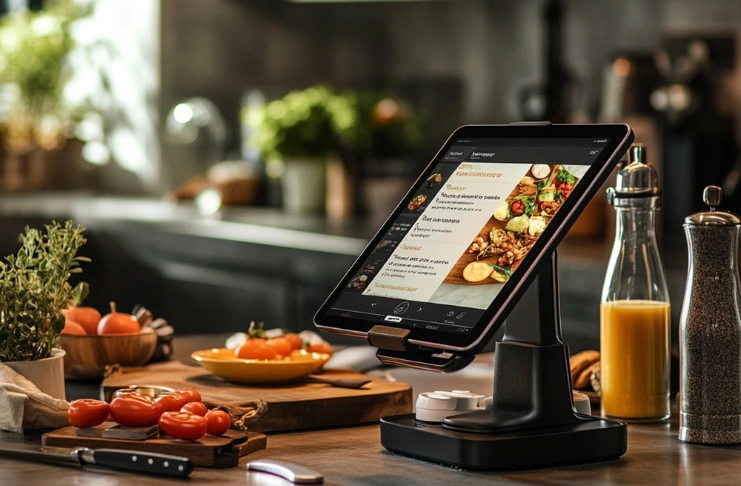Did you know that 3 out of 4 restaurant orders are taken to go? Running a restaurant today, with the rise of online ordering systems for restaurants, means much more than cooking great food. From managing rush hours to meeting customer expectations for speed and convenience, the key to thriving lies in operational efficiency. That’s where a restaurant ordering system becomes your strongest ally. Whether you’re just starting out or scaling your small business, understanding these systems is essential.
A restaurant ordering system is a technology-driven solution that allows customers to place food orders, either digitally or in-person, and ensures those orders are communicated efficiently to the kitchen and service staff.
This blog dives deep into how this system works, the types available, and how to choose the best online ordering system for small businesses. We’ll also explore the top solutions that can simplify operations, reduce errors, and elevate customer experience.
Why Restaurant Ordering Systems Matter in 2025
With customers expecting shorter wait times, seamless service, and accurate orders for takeout and delivery orders, traditional pen-and-paper methods no longer cut it. A recent survey indicates that 72% of diners believe technology enhances their guest experience, reflecting a shift in customer expectations.
INDUSTRY INSIGHT
| Nearly 75% of restaurant traffic now comes from off-premises orders, with takeout, delivery, and drive-thru becoming key consumer preferences, according to the National Restaurant Association’s 2025 Off-Premises Trends report. This shift highlights the growing importance of these services for restaurant businesses. |
An effective ordering system bridges front-of-house and back-of-house operations, improving:
- Speed of service
- Order accuracy
- Customer satisfaction
- Table turnover rate
- Profit margins
How Restaurant Ordering Systems Work
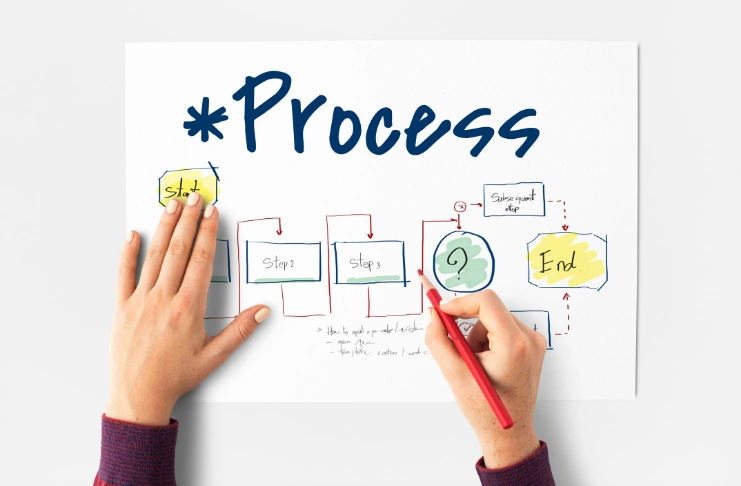
A restaurant ordering system with an easy-to-use interface is a well-connected digital workflow that bridges the gap between customers, front-of-house staff, and the kitchen. Here’s how each component contributes to a smooth and efficient process:
1. Order Placement
Customers initiate the ordering process through multiple channels (like a mobile ordering page): a waiter using a POS terminal, a self-service kiosk, an online ordering website, etc.
Digital menus are displayed, allowing customers to browse items, view images and descriptions, apply filters (e.g., vegetarian, spicy), and select add-ons or customizations with ease.
2. Order Transmission
Once placed, orders are sent instantly to the kitchen via a Kitchen Display System (KDS) or printed as a Kitchen Order Ticket (KOT).
This eliminates manual relay of information, reducing miscommunication between waitstaff and chefs.
3. Order Preparation
The kitchen staff views incoming orders in real time on the KDS, which organizes tasks based on preparation time and priority.
Prep timers and color-coded indicators often assist in ensuring timely execution and coordination across stations.
4. Status Updates
Customers are kept informed throughout the process via SMS alerts, on-screen displays (in-store), or app notifications.
Order statuses may include “received,” “in preparation,” “ready for pickup,” or “out for delivery” and you can also track your delivery drivers.
5. Payment Processing
Payments, including online payments, are processed seamlessly within the same system, supporting cards, UPI, mobile wallets, net banking, or even cash-on-delivery.
Integration with secure payment gateways ensures encrypted transactions and reduces friction during checkout.
6. Order Completion & Feedback
After the meal is served or delivered, customers are prompted to provide feedback via a mobile app, email, or on-screen form.
Many systems use this data for service improvement, loyalty rewards, or follow-up marketing campaigns.
Types of Restaurant Ordering Systems
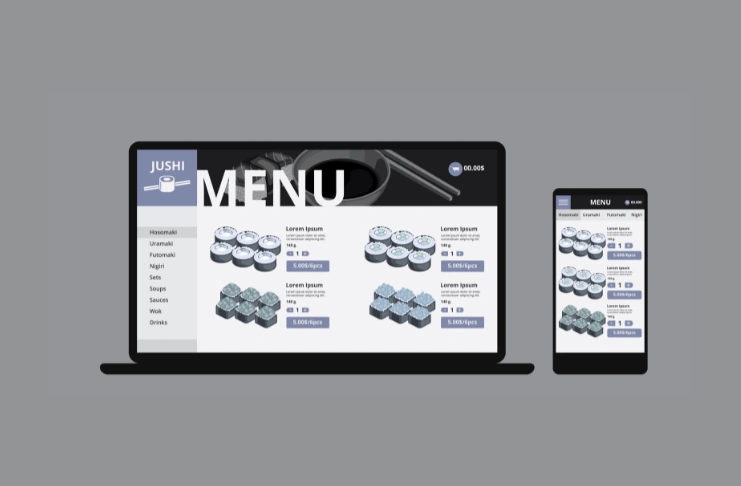
Restaurant online ordering systems are no longer one-size-fits-all in the restaurant business. Modern-day eateries, from cozy cafes to bustling QSRs, require systems tailored to their operational style, customer flow, and service model. Below are the most common types of systems restaurants use today, each offering unique features and advantages:
1. Traditional POS-Based Ordering Systems
These are hardware-based systems installed on-site, where staff manually input customer orders into a point-of-sale terminal.
- Advantages: Offers full control, supports custom workflows, and integrates with inventory and billing.
- Best suited for: Full-service restaurants, fine dining establishments, and dine-in outlets with table service.
2. Online Food Ordering Systems
These systems allow customers to place orders directly through the restaurant’s website or via third-party online ordering platforms.
- Advantages: Broader reach, increased sales, reduced phone call orders.
- Best suited for: Cloud kitchens, QSRs, and casual dining brands seeking delivery and takeaway growth.
3. Self-Service Kiosks
Interactive touchscreen terminals are placed within the restaurant where customers can browse menus and place their own orders.
- Advantages: Speeds up service, minimizes human errors, and reduces labor costs.
- Best suited for: Fast-food chains, food courts, and high-footfall cafes.
4. QR Code/Table Ordering Systems
Enables contactless ordering by letting customers scan a QR code on their table using their smartphone.
- Advantages: Reduces staff dependency, fast ordering, and enhances safety post-pandemic.
- Best suited for: Cafés, bistros, casual diners, and small eateries.
5. Mobile Apps Ordering Systems
Branded applications offer customers the ability to order food, earn loyalty points, track deliveries, and save preferences.
- Advantages: Builds customer loyalty, enables push notifications, and facilitates repeat orders.
- Best suited for: Restaurant chains, fast casual dining, and high-volume takeout models.
6. Third-Party Delivery Integration Systems
Middleware tools that consolidate incoming orders from delivery aggregators like Zomato, Swiggy, Uber Eats, and pass them into the POS.
- Advantages: Centralized order management, real-time sync, improved kitchen coordination.
- Best suited for: Restaurants managing multiple aggregator channels.
7. Kitchen Display Systems (KDS)
Digital screens are placed in the kitchen to streamline order prep by replacing traditional paper tickets.
- Advantages: Prioritizes dishes, enhances kitchen efficiency, and tracks prep time.
- Best suited for: High-volume restaurants, pizzerias, and QSRs.
8. Voice Ordering Systems
Leverage smart devices and AI assistants (like Alexa or Google Assistant) to enable customers to place orders via voice.
- Advantages: Hands-free convenience, futuristic experience, and great for visually impaired users.
- Best suited for: Drive-thrus, innovation-driven brands, and tech-savvy customer bases.
By understanding these types, restaurant owners can better match a solution to their business goals, customer expectations, and service style. Many modern systems also allow hybrid integrations — combining, for instance, a POS with mobile ordering and QR code menus, offering maximum flexibility and scalability. Each restaurant has its own unique workflow. Choosing the right system depends on your concept, service type, and customer behavior.
Benefits of Using a Restaurant Ordering System

A convenient online ordering system can streamline operations, improve customer satisfaction, and attract new customers by enhancing profitability through automating key processes.
1. Enhanced Order Accuracy
Manual order-taking leaves room for human error—misheard items, forgotten modifiers, and illegible handwriting can all lead to kitchen mistakes. A digital ordering system ensures that customer inputs are directly transmitted to the kitchen display or printer without manual interference. This accuracy reduces complaints, waste, and rework.
2. Faster Turnaround Time
By sending orders instantly from the table or customer device to the kitchen, digital systems eliminate the back-and-forth of traditional ordering. Quicker communication means faster prep times, reduced table turnover rates, and happier customers, especially during peak hours.
3. Better Customer Experience
Restaurant ordering systems offer self-service options, online menu customization, and real-time updates. Customers appreciate transparency—knowing the estimated wait time, customizing meals to dietary preferences, and making secure, contactless payments from their own devices or kiosks improves overall satisfaction.
4. Increased Sales
Digital systems make up seamless selling. When a customer adds a burger to their cart, the system might suggest fries or a combo deal automatically. Strategic prompts for add-ons or high-margin items can boost average order value without being intrusive and increase online sales.
5. Lower Labor Costs
With fewer staff needed to take orders, you can allocate team members to high-impact roles like food prep or guest engagement. In small restaurants or cloud kitchens, this efficiency translates into direct savings in payroll.
6. Data and Analytics
Modern systems collect data on every transaction—peak hours, top-selling items, repeat customers, etc. This intelligence helps you refine menu items, schedule staff effectively, and plan promotions based on real customer behavior.
7. Inventory Integration
Linking your ordering system with inventory software allows real-time stock tracking. This prevents selling out-of-stock items and aids in reducing waste, reordering supplies accurately, and managing vendor relationships efficiently.
How to Choose the Best Restaurant Ordering System for Small Businesses
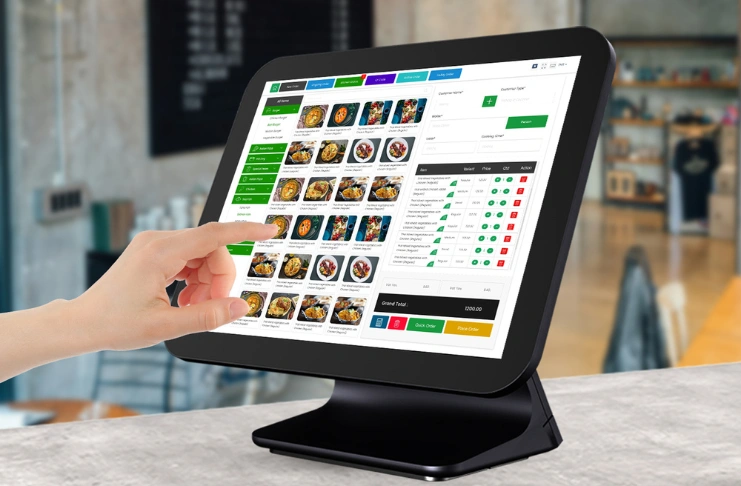
Not every solution fits all. Here are the key factors to evaluate:
1. Budget
Your financial stage matters. A bootstrapped startup might prioritize free or low-cost systems with essential features, while an expanding chain may require a premium platform with CRM, multi-location management, and integrations. Opt for systems that balance affordability with utility.
2. Integration
The system should seamlessly connect with your current POS, accounting software, delivery aggregators, CRM, and loyalty tools. Poor integration can lead to siloed data and operational bottlenecks.
3. Ease of Use
If the platform is difficult for your staff to learn, it disrupts service. Choose intuitive systems with minimal learning curves, preferably with mobile apps and cloud access. Simplicity ensures quicker adoption and fewer errors.
4. Scalability
Don’t just think of current needs—plan ahead. Choose a system that scales as you grow—adding outlets, delivery partners, or loyalty programs—without switching vendors or rebuilding infrastructure.
5. Support & Maintenance
Even the best tech needs support. Select vendors who offer 24/7 assistance, regular online ordering software updates, quick bug fixes, and onboarding assistance. A responsive support team ensures you never lose business due to tech glitches.
6. Features
Look for tools that align with your business goals. Must-have features include:
- Multi-channel ordering (dine-in, takeaway, delivery)
- Real-time order tracking
- Customer feedback tools
- Promotions & loyalty programs
- Menu engineering & combo creation
- Analytics dashboards
7. Customer Reviews
Before committing, check user reviews on platforms like G2. Real-world feedback offers honest insights on reliability, performance, and customer support—helping you avoid costly mistakes.
Key Features to Look for in a Restaurant Ordering System

When selecting a restaurant ordering system, it’s important to choose a solution that not only fits your current business model but also allows for growth and adaptability. The right system can streamline operations, improve customer satisfaction, and increase revenue.
Here are some essential features you should look for in an ordering system to ensure that it meets the unique needs of your restaurant:
1. Customizable Digital Menus with Photos and Modifiers
A good restaurant ordering system should allow you to create dynamic, visually appealing menus that can be easily customized. This includes the ability to add photos of menu items, detailed descriptions, and dietary options (e.g., vegetarian, gluten-free). Customization also includes menu modifiers like size options, toppings, or special requests.
The more engaging and informative the menu, the better your customers can make their choices, leading to higher satisfaction and fewer errors.
2. Real-time Kitchen Order Display or Print Integration
Gone are the days of handwritten orders being passed between servers and kitchen staff. With a digital ordering system, orders are sent directly to the kitchen in real-time. Whether you choose a digital kitchen display or integrated order printing, this feature eliminates delays, reduces miscommunication, and speeds up food preparation.
The kitchen staff can immediately view incoming orders, allowing for a smoother workflow and faster service.
3. Inventory Sync to Avoid Overselling
Integrating your ordering system with inventory management ensures that you won’t accidentally sell out-of-stock items. When an item is sold out, the system can automatically mark it as unavailable, reducing customer frustration and preventing inventory mismanagement.
Real-time inventory syncing helps track ingredient usage and alerts you when supplies are low, helping to streamline procurement.
4. Mobile Responsiveness for On-the-Go Management
With the increasing reliance on mobile devices, it’s important that your restaurant ordering system is mobile-responsive. Whether it’s for on-the-go management, accepting orders from your mobile device, or ensuring customers can place orders directly from their smartphones, the system should offer flexibility and seamless access.
This feature is particularly important for food trucks, pop-ups, and small operations that require remote access to manage orders in real-time.
5. Analytics & Reporting Dashboards
A robust ordering system provides valuable data and insights. With detailed analytics and reporting dashboards, you can track sales performance, order trends, customer preferences, and peak hours. This data allows you to make informed decisions about inventory, staffing, marketing, and menu design.
Having access to real-time metrics helps you optimize restaurant operations, minimize waste, and increase profitability.
6. Table Management Tools for Dine-In Operations
For restaurants with dine-in services, table management is crucial. A system with built-in table management features can help optimize seating, track customer wait times, and ensure an efficient flow of guests.
It allows the front-of-house staff to manage table assignments, track open/closed tables, and even provide estimated wait times for guests, improving the customer experience.
7. Third-Party Delivery Integration
In the modern restaurant environment, many businesses partner with third-party delivery services such as UberEats, DoorDash, or Grubhub. An ideal restaurant ordering system should easily integrate with these delivery platforms to consolidate all incoming orders into one streamlined system.
This reduces the need for manually managing multiple platforms and ensures that delivery orders are processed quickly and accurately.
8. Loyalty & Rewards Programs
Loyalty and rewards programs can drive customer retention and boost repeat sales. An effective ordering system should allow you to integrate or create loyalty programs that track customer orders, offer points, and provide personalized discounts or rewards.
Whether through app-based loyalty systems or digital punch cards, rewarding customers for their loyalty enhances their experience and encourages repeat business.
9. Contactless & Digital Payment Options
In the post-pandemic era, integrating with third-party apps for contactless payment options is essential. Your ordering system should allow customers to pay digitally through methods like credit cards, mobile wallets, or QR code-based systems. This not only increases convenience for customers but also speeds up the payment process, reducing wait times. Security is key in this feature, so ensure that the system offers robust encryption and complies with industry standards for payment security.
Trends Shaping Restaurant Ordering Systems in 2025
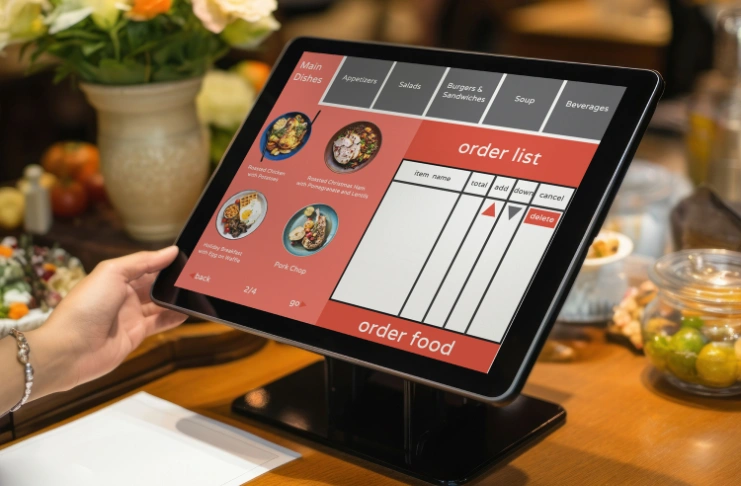
As technology continues to evolve, restaurant ordering systems are adapting to meet changing customer expectations and industry demands. Here are the key trends shaping these systems in 2025.
1. AI-Powered Recommendations
Machine learning will personalize menu suggestions based on dietary history, time of day, and behavior trends—similar to how Amazon suggests products.
2. Voice Ordering & Chatbots
Customers will increasingly use voice assistants and chatbots on websites or apps to place orders, reducing the need for human agents.
3. Blockchain in Payments
To ensure tamper-proof, transparent transactions—especially for large or recurring orders—blockchain technology will see greater adoption.
4. Hyper-Personalization
Systems will analyze past data to create dynamic menus, pricing offers, or combo suggestions unique to each returning customer.
5. Sustainability Tracking
Green-conscious brands will adopt platforms that show customers the carbon footprint of dishes, using it as a brand differentiator.
Real-World Examples

1. Domino’s (U.S.)
With the maximum number of orders coming from digital channels, Domino’s is testing a voice recognition feature to automate pizza orders made on the phone.
2. McDonald’s
With over 130,000 self-service kiosks worldwide, McDonald’s has set a new standard in fast-food automation, improving efficiency and customer satisfaction.
Conclusion
A robust restaurant ordering system is no longer a luxury — it’s a necessity. Whether you’re running a small café or planning to scale a cloud kitchen, choosing the right system can transform your customer experience, attract more customers, streamline operations, and boost profits.
From understanding how this system works to exploring its different types and finally selecting the best restaurant ordering system for a small business, we hope this guide helps you make a confident decision.
Frequently Asked Questions
1. What are the 4 types of ordering system?
The four types of ordering systems are traditional in-person ordering, online ordering, mobile app ordering, and self-service kiosks.
2. What is the ordering system in a restaurant called?
The ordering system in a restaurant is typically referred to as a Point of Sale (POS) system or restaurant order management system.
3. What is a POS system in a restaurant?
A POS (Point of Sale) system in a restaurant is a software and hardware setup used to process orders, track sales, manage payments, and perform inventory management.
4. How much does an ordering system cost?
The cost of a restaurant ordering system can range from $30 to $250 per month, depending on features and the size of the restaurant.
5. How does a food ordering system work?
A food ordering system allows customers to place orders through a digital interface (app, website, or kiosk), which is then sent to the kitchen or POS system for processing.
6. What is the ePOS system in a restaurant?
An ePOS (electronic Point of Sale) system is a digital platform used to manage orders, payments, and other transactions in restaurants, often integrated with inventory and accounting software.
7. What is a restaurant order management system?
A restaurant order management system is software that helps restaurants track, process, and manage customer orders from ordering through payment and delivery.
8. What kind of system do restaurants use?
Restaurants commonly use POS systems, order management systems, and integrated kitchen display systems to streamline operations and improve customer service.
9. What is the most popular POS system for restaurants?
The most popular POS systems for restaurants include Restroworks, Toast POS, Square for Restaurants, and Lightspeed, known for their ease of use and comprehensive features.
10. What are the different types of food ordering?
The different types of food ordering include in-person ordering, online ordering via websites, mobile app ordering, and third-party delivery service orders.
11. What is the best food ordering platform?
The best food ordering platform depends on the business’s needs, but top choices include Restroworks, Toast POS, Grubhub, Uber Eats, and DoorDash, depending on the restaurant’s location and requirements.


